Eric Merola – His Awakening, and his journey into documentaries (Part 2 of 2)
This blog is a continuation of a previous blog entry, click here to read “Part 1”.
5. Enter the world of The Cancer Industry
One afternoon, while strolling through the East Village in New York City, I passed “The Strand” bookstore, which sells new, used and rare books. Sitting on the sidewalk shelf outside were the really cheap bargains, and there sat a title that caught me eye, “The Cancer Industry”, by Ralph W. Moss, PhD. Right on the cover was a quote from the only person to win 2 solo Nobel Prizes in world history, Linus Pauling, which read: “Everyone should know the war on cancer is largely a fraud.” I always liked having a book in my backpack for the long train rides home after working late at the office, so I bought it. (Click here to read the original letter from Linus Pauling to Ralph W. Moss this quote came from).
I simply couldn’t put this book down — I must have read it 10 times while riding the train to and from work. This book primarily told the story of Ralph W. Moss’ first-hand account dealing with Sloan-Kettering’s cover-up of their own positive Laetrile studies. After Ralph was fired by Sloan-Kettering for blowing the whistle on this cover-up he decided to write a book about this experience, as well as other potentially effective cancer therapies that suffered similar fates. Ralph apparently said to himself, “if this could happen right before my eyes, surely it’s happened elsewhere.” Reading this book had given me my first idea for a documentary film, I really wanted to tell Ralph’s story in the form of a documentary. I guess it was back in 2007 when I started to email Ralph Moss trying to convince him to allow me to tell this story – but he turned me down. At the time, he was rather tired of this story, and I really had no documentary credentials to speak of, not as a director anyway.
6. Enter the world of Dr. Burzynski
So I set my sights on another chapter in his book, one that told the story of Dr. Stanislaw Burzynski, MD, PhD. According to Ralph’s book, Dr. Burzynski had repeatedly defeated both state and federal agencies in their attempts to destroy him and his cancer-fighting invention, Antineoplastons. I felt this could be a solid 2nd choice in making a documentary within this genre. One thing I told myself when searching for a documentary subject was: it can’t be a subject that has been previously covered by someone else, the “Burzynski Saga” was a perfect choice for me. I emailed and called The Burzynski Clinic repeatedly, only to be met with a luke warm response, and a general sense of distrust toward me. I could understand his reasons, after all, virtually no media outlet had ever done anything positive or truthful about this doctor in the past, so why would some nobody documentary filmmaker be any different?
The only really objective report I could find was a CBS “48 Hours” report from 1996, where Mary Jo Seigel who had non-Hodgkin’s Lymphoma entered an MRI machine with CBS’s cameras rolling to see if Burzynski’s Antineoplastons had been working, and right before CBS and Mary Jo’s highly skeptical oncologist, her cancer was gone, below:
After Dr. Burzynski gave me numerous homework assignments, asking me to read various things about him, including the peer-reviewed studies of his work, he finally agreed to give me contact information of some of his past patients who had agreed to speak to me, but he wasn’t willing to allow me to interview him just yet.
When I decided that this was my next path in life (and realizing that doing animation work wasn’t something I wanted to do forever), I took the highest paying, yet least demanding job I could find in my field. I started freelancing full-time at a motion graphics shop called “Spontaneous”. This was a high-end award-winning shop, but they also had some big blue-chip clients like KOHL’S department stores. They needed a seasoned After Effects designer to make graphics like “30% off” and “Mother’s Day Sale” fly across the screen for their TV commercials. I found this to be a perfect fit for me, as it required zero thinking, and paid very well, allowing me to concentrate on this new documentary film on Burzynski. None of the other designers in the place wanted to touch this client, as it was beneath them since it wasn’t anything that required high end design or could win them an award. I had KOHL’S as the main client for a while, and then we got “JCPenny’s” which is essentially the same as KOHL’S. They both had “President’s Day Sales” and the like. Clients in advertising are all the same, they can’t make up their mind about anything, which was great for me. While I was waiting 6 hours for the client to decide if they wanted “30% off” in the Helvetica or Futura font, I was busy in the office planning my escape by making this documentary. Clients love to waste time, but I wasn’t wasting a second.
The first patient that agreed to be interviewed by me was Jodi Fenton, but there was one problem, I had no cameras, no lights, no microphone, nothing. I literally borrowed camera equipment, lights and sound equipment for most of the production on “Burzynski”. Jodi lived in Los Angeles, so one Friday after work, I jumped on a plane, interviewed Jodi on a Saturday, and flew back. I then interviewed Jessica Ressel, Kelsey Hill, Lt. Col. James Treadwell, and many others — often by calling in sick to work to make time for these travels.
All of the patients were skeptical of me and my intentions, but they wanted their stories to be told, especially if it could help save more lives. Terminal cancer is hard enough to fight, but these patients were fighting something else: criticism. Criticism from their family, friends, and local doctors for choosing to be treated by an alleged charlatan in Houston, Texas.
When interviewing patients, I specifically asked for patients that had a definitive cancer diagnosis, and hadn’t had any previous therapy at all – other than Antineoplastons. I also insisted on having access to all of their medical records. Everyone complied. I felt, “if I am going to make a documentary about cancer patients and a group of experimental medications (Antineoplastons) that some firmly believe is snake oil, I better be able to back up these claims.” However, cancer-free patients who used Antineoplastons that led to their cure was only half the story here.
This was all in late 2008 and early 2009.
Using my footage and their medical records, I created a 30-minute edit of these patients, and mailed it to Dr. Burzynski. It wasn’t until Dr B watched this did he realize that I intended on telling the truth about this story, and he finally granted me an interview. I interviewed Dr B for about 6 hours for the first session. I then went back about 3 months later for another marathon session.
I realized after my first interview with him, that this story was way bigger and deeper than anything I could have imagined. I mean, c’mon, “doctor invents effective cancer therapy, and once he starts curing people every single cancer industry related entity tries to take away his license, they try to imprison him for life, and oh — they also tried to steal it for themselves using one of Dr. B’s own scientists.” Totally insane!
Dr Burzynski is a pack rat when it comes to documentation, and saves everything. I spent hours, with the help of Carolyn Powers (one of his employees) sifting through thousands of pages of documents. He had everything: all of the Texas Medical Board cases he won, the two federal FDA cases he won, and all sorts of internal documentation related to his run-in with the National Cancer Institute (NCI) and the contract scientist that tried to help the NCI steal one of his patents. Some of the documentation was so damaging on the part of the NCI, I remember asking Burzynski, “how on earth did you get a hold of these NCI internal memos about you?” He said, “would you believe an anonymous employee at the NCI was faxing me this stuff? I still don’t know who leaked it to me.”
Curing cancer was one thing, but curing cancer while the world is trying to destroy you for having the nerve to do so, that’s another ball game. As a documentarian, finding “proof” of these events was a piece of cake, but organizing it in a way the public could understand it was a challenge. So I split the film up into sections: “Texas Medical Board (TMB) vs. Dr. B” where the TMB took Dr. B all the way to the state’s supreme court and lost; “The FDA vs. Dr. B” where the FDA conducted nearly a dozen grand juries, that ended up in 2 federal juried trials trying to convict Dr. B of mail fraud and other erroneous charges, while not allowing whether Antineoplastons worked into the courtroom; “The NCI vs. Dr. B” where the NCI conducted which was essentially a fake clinical trial so they can publish it and say “it doesn’t work”; and the stunning conclusion to find out that the National Institute’s of Health (which the NCI and FDA are a part of) had been working behind the scenes the entire time using Dvorit Samid, one of Dr. B’s own contract scientists, to try to steal one form of Antineoplastons (AS2-1) by filing 11 patents for it!
I had a private screening in NYC for some filmmakers that worked for PBS. Everyone was stunned by the film. They were particularly annoyed that I placed “sources” at the bottom of the screen for all the documentation I used. They were shocked to learn that I did this because I had planned on making a free online interactive transcript of the entire film with sources and copies of all the documents – so the skeptical audience can fact-check and verify everything for themselves. I thought, “why not prove to the public that all of this is true, by allowing them to fact-check it for themselves?” Made sense to me. Imagine if this was a requirement for all documentary films? It sure would weed out the ones that were full of shit.
To this day, the anti-change/anti-science bloggers and the mainstream media pretends this transcript doesn’t exist.
Perhaps the most eye-opening thing that happened while finishing production was a rare chance opportunity to show the film in a rough cut form to David Axelrod, President Obama’s Chief of Staff, and head of his election campaign. This was in late 2009, before I released the film in Spring, 2010.
Burzynski’s head of finance, who was trying to raise the required $150 Million to get his Randomized Phase 3 trials off the ground, was old college buddies of David Axelrod. He called me up and said “I’m having lunch with David in D.C. next week, Fed Ex me a DVD I want to give him a copy.” About 3 weeks later he calls to tell me what Axelrod said after watching the rough cut of “Burzynski”. He said, I kid you not,
“This is extremely important, but it’s just too big, maybe in 10 years we can face this issue, but not right now. The stock market just tanked, and if we allowed these medications to hit the market now, the entire thing could crash further.”
Wow.
This completely confirmed what I already assumed: the issue is money and monopolistic control over a billion-dollar market. It’s sort of like inventing a car that runs on tap water – there’s no way in hell they will ever allow that to reach the market. In a way, as dramatic and sad as it was to hear the Chief of Staff of the Office of the President of the United States confirm my worst fears, there was a sense of satisfaction knowing that my assumptions on this issue weren’t theoretical – and were confirmed by the highest office of our so-called “free world”.
Then, in early 2010, I was informed that NBC’s Dateline was working on a “report” on Burzynski and his patients. Burzynski just told them, “before I speak to you, you need to watch Eric Merola’s documentary as it will give you the best overview of my story in a 2-hour sitting.” I wasn’t about to mail a rough cut of my film to Dateline, but I did agree to watch it in their office with them. Dateline’s offices were nestled deep within “30-Rock”, and I sat in a little office with the show’s producer and watched “Burzynski”. She cried twice during the film. While walking to the elevator, I said, “don’t you think the days of saying this therapy doesn’t work are over?” She replied, “I want to tell the truth in this TV special, but you have to realize that my bosses and our advertisers will not allow it.” Yet another affirmation, this time about the reality of our so-called “free press”.
Before the film had it’s New York City and Los Angeles opening, it screened at the Newport Beach Film Festival, where it won the top Humanitarian Award. What was rather hilarious about this screening was, Dateline was there to film the Q&A, and when I went in to do a screen test of the movie, there sat Nancy Snyderman in the theater. She introduced herself, and quickly asked me: “do you think there is a conspiracy against Dr. Burzynski?” I said, “well, it depends on how you define the term, if you mean ‘people got together and conspired to destroy Burzynski’ – I don’t ‘think’ that has happened, it is happening.” Nancy then asked, “why would anyone do that?” I replied, “well, think about it, he owns the exclusive rights to these medications, and if they were approved for market, it would crush the current monopolistic cancer industry marketplace.” Nancy just sneered at me in disgust, and abruptly ended the conversation. I guess she wasn’t prepared for such direct logic. This screening was sold out, and as more people entered the theater, the more disgust was displayed on Synderman’s face. My mother was there, and said, “look at Nancy, it looks like she just sucked on a bunch of lemons.”
Here is a photo during the Q&A:
The Dateline “Special” aired, and it was an absurd hit piece. They also ignored everything in my movie that pertained to the corruption on the part of the government. To their credit, they did interview some people who were cured by Burzynski, but it was always framed with “she believes she was cured”, “he believes Antineoplastons made his cancer go away.”
Huh? Cancer doesn’t just go away on a person’s belief, it can easily be proven by a before and after MRI or other scan. The fact that they are alive 5+ years later without cancer isn’t stemmed from a patient’s “belief” – it’s a factual event. We don’t “believe” the earth is round, it is round, and can be equally proven as such.
This was my first real experience dealing with the press, and I must say I was rather shocked at how clumsy, haphazard, and lazy their “report” was.
7. Polarization: two types of people, two types of responses
“Burzynski” opened up for a full theatrical run in New York City and Los Angeles in 2010. It got some acceptable reviews in the New York Times, Variety, and Los Angeles Times.
It got some bad reviews too, especially from The Village Voice. However, I found that the bad reviews were done by lazy writers that didn’t actually watch the film at all, while the good reviews – they were by people who actually watched the film. For example, The Village Voice printed that Dr. Burzynski was giving patients animal urine as a cancer treatment – I fell off my chair laughing when I read it. Finally, after people bombarded the online article with comments making fun of this writer (the Village Voice later deleted all of these comments), and even an article from MOVIELINE covering the drama, she finally fixed it.
However, I learned something new about movie reviewers, the lazy reviewers not only neglected to watch the movie, but they copied The Village Voice review almost verbatim, creating an endless stream of mistakes with “animal urine” parroted in The New York Post and other “articles”. Another eye-opener. I guess if your job is to watch movies all day and write things about them, it’s easy to cheat and write your review based on another person’s review, assuming that reviewer actually pushed play on the DVD player, or removed it from its packaging for that matter.
The New York opening was a huge success. More than one oncologist came up to me after the screenings commending me on the film, and when I asked “would you go on camera and say what you just said?” They’d laugh and respond with “no way”.
In the end, I found there were two types of personalities which garnered two different types of responses to “Burzynski”. The first were those who looked at it, and realized it was an air-tight documentary and found it quite believable since it was sourced to the teeth; while the other type all had an emotional response, like “if this were true, every oncologist would be using Antineoplastons”, or “we would have heard about this sooner than this”, or “I just can’t believe it’s possible that this could be happening.” All of these responses are emotional, and not based on fact or evidence. It was all based on their internal “belief systems”, and not on the verifiable facts they just witnessed.
Here is the trailer for “Burzynski, the Movie”:
8. Don’t bother hoping for change.
If you’ve read Part 1 of my story, you know by now I sit on neither side of the political isle as I see the entire system as uniformly broken, and no “Democrat” or “Republican” can fix it. This country has been bought and paid for years ago, and the politicians we shuffle around every 4 years are irrelevant to the general public – they serve our country’s owners. However, I learned that people on the “right” liked this film more than those on the “left’. The “left” seemed to have a blind and naive religious-like belief that our regulatory agencies are perfect, and they are there to protect us, and there is no way industry can influence a regulatory agency, especially when it comes to an effective cancer treatment. While those on the “right” have always felt that our regulatory agencies are too powerful, and if they had it their way they’d get rid of them altogether. The only politicians that ever came to Burzynski’s aid in the 1990s were Republicans — while Democrats like Henry Waxman just sat smugly rolling their eyes during all the congressional hearings pertaining to Burzynski.
One thing is for sure, politicians will not touch this situation anymore. I have personally met with a few congresspeople on this issue, and the outcome is always the same: “wow, this is really important, we will help do something about this, I can’t believe I didn’t know about this until now” – and then, “poof!” no more returning of phone calls or emails.
One thing we as Americans have to come to terms with is this: politicians aren’t allowed to truly help the public when it comes to interfering with the establishment’s bottom line. Politicians are slaves to the upper 1% and the companies and people who own them. I’ve said it many times, there is a reason it is called “the establishment”, as it has been “established”, and changing what is established is unacceptable, and this will not change without massive public upheaval. Occasionally, democracy works when the people themselves have an actual voice, like the legalization of marijuana in Colorado. But thinking a politician has our best interests in mind is a tragic failure of a basic understanding of the system in which we live.
Even when the occasional politician tries to do something “good” for the public, they are destroyed. Take former PA Congresswoman Kathy Dahlkemper, who introduced HR-3472 which proposed that people who make healthier lifestyle choices, and have a good track record of good health (no disease, good blood pressure, good cholesterol, good body weight, etc) – those people are entitled to get a discount on their health insurance.
This bill never made it to the floor. The two groups that lobbied to kill this bill was The American Heart Association and The American Cancer Society. Don’t believe it? See the clip below, the only media outlet to cover this atrocity was “The Daily Show”. Needless to say, this “do-gooder” wasn’t reelected.
What does this tell us? Is the American Cancer Society and The American Heart Association implicitly telling us they need us to have more cancer and more heart disease to protect their bottom line? Apparently!
Oh and for those who love their “Obama Care”, before Obama Care went into effect our health insurance was $250 a month (for me and my wife). After Obama Care, it doubled to over $500 a month. We cancelled it, and are now uninsured. I’d rather pay the $1,000 fine than fork out $6,000 a year for insurance where the deductible is now so high it basically makes no difference if I have insurance or not. How anyone couldn’t see this health care bill as a blatant financial gift to the health insurance companies who lobbied for it – is astonishing. Again, I couldn’t care less about the “left” or the “right”, regardless of what political office created this health care bill – it was nothing more than another highly profitable power grab on the part of industry, using our elected politicians to do it.
9. Moving on…
In the summer of 2010, as word of the movie began to get out, I was contacted by two important players in the Burzynski story. The first was Judge Earl Corbitt, who was the administrative law judge in one of the big Texas Medical Board cases against Burzynski in the 1990s.
Earl was at a screening of the film in Austin, TX, and I was there for its Q&A. At the end of the Q&A Earl stood up and identified himself. I soon flew back to Austin to interview him, and added him to the film. Then, out of nowhere, I get an email from Dr. Li-Chuan Chen, a former National Cancer Institute scientist given the task of independently studying Antineoplastons at the NCI working under Dr. Dvorit Samid, the scientist who once worked for Burzynski before she teamed up with the NCI to try to steal it! Dr. Chen watched the entire episode unfold from the inside. I quickly got myself together and added him to the movie as well.
Below is a clip of Dr. Chen from the DVD Extras:
10. A year passes, and in comes Dr. Mehmet Oz and Dr. Joseph Mercola
A daughter of a Burzynski patient who was cured of non-Hodgkin’s lymphoma, Rita Starr, lives near Dr. Oz’s mother-in-law’s vacation home in Florida. Rita gave Oz’s mother-in-law the DVD, and within a week, she got a call from Mehmet himself. On May 17, 2011, Dr. Burzynski and I were sitting in the Sirius Radio studio with Dr. Oz and his wife Lisa for an interview!
You’d think that this would have increased sales of DVDs or raised more awareness, but it did nothing.
Then, out of the blue, I get a phone call from Dr. Joseph Mercola of Mercola.com, telling me how much he loved the movie, and thinks the world needs to see it, for free! He convinced me that if I placed the movie online for free, he’d email it to his 2+ million subscribers. At this stage the film had already been out for a year, and I thought it had simply run its course. My wife and I had also left NYC at this point due to financial reasons, and were living in NC. I agreed to place the movie on Vimeo, free for only 3 days and allow Mercola to promote it.
On June 11, 2011, Mercola blasted my movie to his 2+ million followers worldwide. The article itself was read nearly 800,000 times, and the movie was viewed by nearly a million people almost overnight. I really hadn’t given this any thought, and when I woke up the morning of June 12th, my inbox was full of thousands of emails, and hundreds of orders for the DVD. Needless to say, the movie remains on Vimeo for free ever since.
You can still see the same Vimeo link below:
Burzynski: Cancer Is Serious Business, Part I – by Eric Merola from BurzynskiMovie on Vimeo.
11. Burzynski hits the stratosphere.
What seemed like overnight, a year after its release, “Burzynski” was huge. People were emailing from all corners of the world. Burzynski’s patient load went from about 10 patients a month to 400 patients a month. Random Hollywood people contacted me wanting to make the “Hollywood” version of this story. Everyone from Sean Penn’s people — to people I am not at liberty to say who – were in touch with me. I wish I was at liberty to say more about this subject, but I just can’t (wink, wink – nudge, nudge – say no more).
I spoke to everyone from Chuck Norris to Russell Brand – who had seen the film on Netflix. Speaking to Chuck Norris was surreal, I remember watching his movies as a little kid, while I was taking karate classes.
Russell gave a tweet, below:
We should all support the efforts of this inspiring man www.burzynskiclinic.com
— Russell Brand (@rustyrockets) August 16, 2011
Later that year, Tony Robbins also tweeted about my documentary.
Anyone who is dealing with Cancer & or the effects of treatment -U owe it 2 yourself see this documentary trailer http://bit.ly/c6yPKR
— Tony Robbins (@tonyrobbins) September 6, 2010
Anyone fighting with Cancer or side effects of treatment must see this 3min trailer -non toxic Alt. http://bit.ly/cMJ2k2 see NY Times quote
— Tony Robbins (@tonyrobbins) September 14, 2010
The film was translated in many languages, even Japanese.
“Burzynski” aired on The Documentary Channel and won the top audience award for Best Documentary of 2011 on the network, it also won 2 awards at HumanDoc in Warsaw, Poland, and took home the Humanitarian Award at the Newport Beach Film Festival. They called it “this year’s THE COVE”.
Here is an interview with me that aired as a promo on the Documentary Channel:
12. So why not make a Burzynski sequel?
Many people emailing me were those who were either suffering from cancer or had a family member suffering from cancer. It dawned on me that I was in a perfect position to make a sequel to this story, but this time in “real-time” where I’d follow patients from right after diagnosis – before, during, and after receiving Antineoplaston therapy. The first movie was more of a biographical picture, but a sequel will be a “modern story”.
So I told anyone that emailed me, “I can’t offer you any medical advice, I am merely an investigative journalist who made this movie, but if you decide to undergo this therapy, I’d love to follow your story.” This is how I met Pete Cohen and his partner Hannah Bradley, Laura and Ben Hymas, and many other patients in the sequel.
The two “star” patients in “Burzynski: Cancer Is Serious Business Part II” were Hannah Bradley and Laura Hymas. Both had dreadful brain tumors. Hannah is still alive and cancer-free today, and Laura was cancer-free for a couple of years before a relapse.
This was very tragic for my wife and I, we had become very close friends with the Hymas’ while making the film. Below is the section of the film with Laura, I added the wedding stuff and uploaded this clip shortly after they were married:
Here we are at dinner for our second visit to England while following Laura’s story:
Another tragedy was the death of Amelia Saunders. I was following her for “Part II” and also became close friends with her parents, Richard and Chantal. Amelia had a “DIPG” (diffuse intrinsic brainstem glioma). These tumors usually appear in children, and Antineoplastons are the only known medications to have ever cured it. Even so, the percentages are low, depending on which study you look at, it’s only around a 20% chance of survival using Antineoplastons.
Overall, “Part II” didn’t really become a “hit”. I also didn’t bother to place it in theaters, thinking it already had enough of a following. People were actually confused, thinking “I’ve already seen that movie”. The fact that it was a sequel somehow flew over many people’s heads. Even with another Mercola.com launch, it sort of fell flat.
Most people felt “Part II” was actually a better movie, it recently won the Sedona Film Festival’s Top Audience Award for Best Documentary in 2014.
Here is an interview I did at the festival as well (he calls me “Mercola”, common mistake):
While filming “Burzynski: Part II” I traveled to Japan to first visit a Tokyo clinic that offers Antineoplastons:
– and then to Kurume University in southern Japan to interview the members of the research team that had been independently studying Antineoplastons for nearly 30 years.
Here we all are at dinner. This team consisted of pathologists, oncologists, surgeons, PhD biochemists, and anesthesiologists:
A very formal photograph after dinner:
Another amusing thing I learned was, our American FDA had heard about the Japanese studying Antineoplastons, and flew to Japan with our tax dollars to “check in on them”. Below are 4 photos of the FDA at Kurume University in 1988 with the Antineoplaston team.
I was hell-bent on not only documenting what the Japanese had done with nearly 30 years of Antineoplaston research, but convincing them to publish their results from their randomized clinical trial using Antineoplastons. The “randomized controlled clinical trial” was created by the scientific community to separate anecdotal data from proven data. The Japanese started with mouse studies, progressed into Phase I and Phase II clinical trials, and then completed a randomized study where the group that received Antineoplastons had double the survival rate than the control group. On top of that, they didn’t even administer the medications the way Dr. Burzynski did. Burzynski gives patients a 24 hour infusion through a line inserted into the chest, but the Japanese just gave arm injections and pill forms of the medicines.
I requested to speak to the head of Kurume University to convince them to publish these studies. If these studies are published in a respectable journal, the National Cancer Institute and American Cancer Society would be forced to change their data, and everyone in the medical community who doesn’t believe this therapy works would all have to just shut up and accept Antineoplastons as a formally proven therapy.
Everyone asks, “Where are your randomized studies? Until they are completed and published, this therapy is still unproven, no matter how many anecdotal cases you present.” What could be better than a randomized study conducted independently, using their own protocols – where the experimental/Antineoplaston group had double the survival rate?
For the sake of the documentary, I wanted them to submit it to The Lancet first, one of the world’s top medical journals. We knew The Lancet would reject it out of prejudice, but it was the principle of the matter – I wanted to prove first-hand that the peer-review process is just as biased as anything else, and science isn’t their priority, especially when that science shows a cancer therapy owned by a controversial figure that works better than anything else on the market. This predicted Lancet rejection was going to be the ending of the movie.
By the time I landed back in the USA from Japan, the FDA had taken Antineoplastons away from Burzynski, in a shocking turn of events – that was to be the ending of the film now. (This has since been reversed, with Phase 3 studies approved).
Later, the Lancet quickly rejected the randomized studies. However, it was also submitted to another big journal, and after 8 months of rigorous peer-review, and requests for edits and clarifications, the Japanese just got word it will be published. I can’t say any more than that at this stage, because this is the opposition’s worst nightmare aside from the medications actually reaching the market.
If you want to witness a fascinating case study of psychology, mental illness, and the human’s ability to deny their own reality – watch what happens when these randomized studies are published. All the opposition to this technology will pervert and contort their brains to such a severe degree in their attempt to convince themselves that these medications don’t work — in a sort of Cirque du Soleil display of mental illness. They will roundly attack the journal that publishes it, while completely ignoring the contents of the article – the science. I can’t wait for this chaos to emerge. Their own mantra: “until there are independent randomized studies published in the peer-reviewed literature, these medications are unproven” – will be violently spit into their faces like a gallon of sulfuric acid, and their sudden denial of this reality and the increased mental illness that will emerge on the part of the opposition – must be appreciated. I will have popcorn and a beer ready for these mind games to commence. But hey, we live in a world where The Flat Earth Society is still alive and well too! There is something very entertaining to me when watching science denialism unfold.
I have to give myself a pat on the back too, as I single-handedly convinced the Japanese to get their randomized studies published, so I can certainly say I’ve played my part in this struggle.
13. And then enters Fabio?!
Fabio, from the “I can’t believe it’s not butter” commercials and former spokesperson for The American Cancer Society – had a sister dying of cancer. At the last minute – when she was on the brink of death – he dragged her out of a hospital in Italy and took her to be treated by Burzynski. Sadly, she was far too gone to be saved. She couldn’t even hold down a glass of water, much less digest any sort of medications, the chemo and radiation had completely destroyed her at this point. Fabio took it upon himself to help promote my Burzynski sequel.
Here he is being interviewed for the film’s screening at the Newport Beach Film Festival in 2013:
Being in the company of this guy was pretty amazing, he’s a larger than life guy with a heart of gold. Women were freaking out. When members of the media asked for an interview he’d say “go home and watch the Burzynski documentaries and then I’ll give you an interview.” Below is Fabio participating in a Q&A after the film.
Here is another rather spirited Q&A session from this tour:
I flew to Toronto for a screening of “Part II”. One of my favorite rock bands in high school was RUSH, who are from Toronto. They even named one of their songs “YYZ” after the airport code in Toronto. The band RUSH is very private, and are nearly impossible to reach because their adoring fans are fanatics, as I once was – and sort of still am.
Upon my return, while waiting in line for security at the YYZ airport in Toronto, I hear a man scream “I’m 007! James Bond is my name!” I turned and looked and it was Richard Simmons. I couldn’t believe it. He was just as obnoxious off camera as he was on camera. I took out my iPhone and started recording him, as trying to tell people about what I was witnessing would be quite difficult. I continued recording him off and on, and even entering the plane. While recording him in first class, sitting behind him was Alex Lifeson, the guitarist for RUSH, and across the isle was Geddy Lee, the bass player and lead singer for RUSH. I couldn’t believe I caught on video the moment I met Alex Lifeson, while also kicking myself for not upgrading to first class. Though, they would have likely kicked me out of first class as I would have driven these 2 members of RUSH nuts trying to talk to them.
Here is a pretty hilarious video of this entire event:
14. 2014 comes “Second Opinion”
While finishing up “Burzynski: Part II”, I finally convinced Ralph W. Moss to allow me to tell his Laetrile story at Sloan-Kettering. This would be a totally different film. I decided I didn’t want this film to be focused on “Laetrile” or advocate its use, but instead about a whistle blower who just happened to be caught up in the scandal that went on surrounding Laetrile at Sloan-Kettering in the 1970s. We managed to get some positive quotes from some huge medical professionals who watched the film or read his new book – one of those quotes came from the former head of the USA President’s Cancer Panel (Cancer Czar), and the former President of the American Cancer Society.
Here is the trailer, and you can rent or buy it right now (which includes the 12 extra chapters of extras):
“Second Opinion: Laetrile At Sloan-Kettering” will be opening up in theaters this Fall. The film is only 75 minutes, but the story runs deep — so I had to make another 74 minutes of “Extras” for the DVD & Blu-ray.
Here is a clip of one of the “extras”, Coley’s Toxins was another alternative therapy Sloan-Kettering was trying to get back into the mainstream, but the Laetrile debacle totally screwed up its chances:
Here is a photo from a Q&A after a screening in San Luis Obisbo:
Here is the video of the Q&A session from March 6, 2014:
Here is another Q&A session from August 29, 2014 – New York City theatrical premiere:
Click here to listen to a fabulous NPR interview with Ralph W. Moss talking about this project.
We shall see what unfolds around the release of “Second Opinion”. Will it be as successful as the first Burzynski film? Hard to tell at this stage.
15. The Texas Medical Board attempts one last time to destroy Burzynski
In July of this year, The Texas Medical Board has filed a 200+ page “complaint” against Burzynski, conveniently after the FDA lifted all their restrictions against him. Here is an article in the lovely rag of rags, USA Today.
Tha



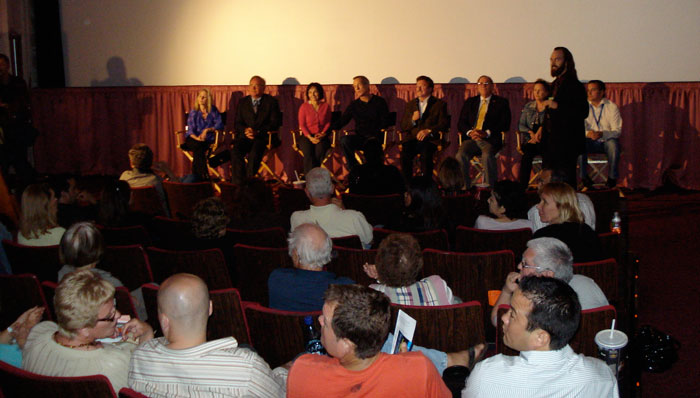
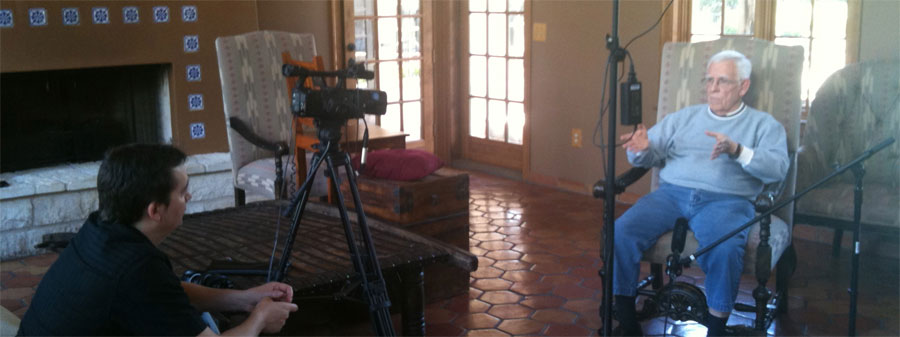
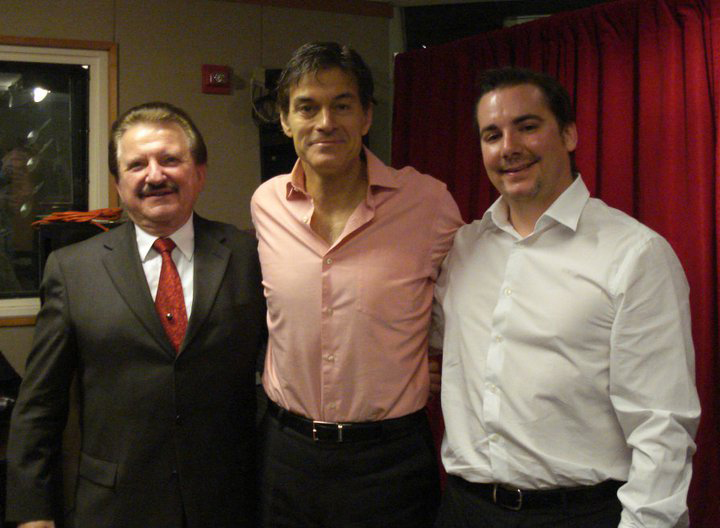
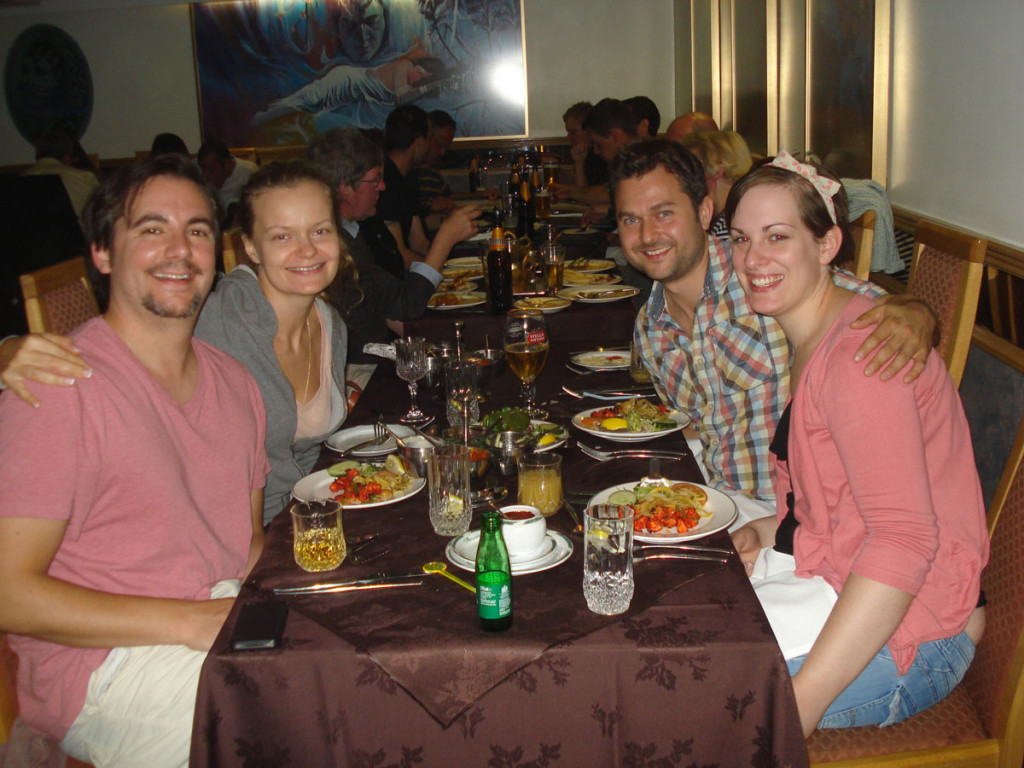

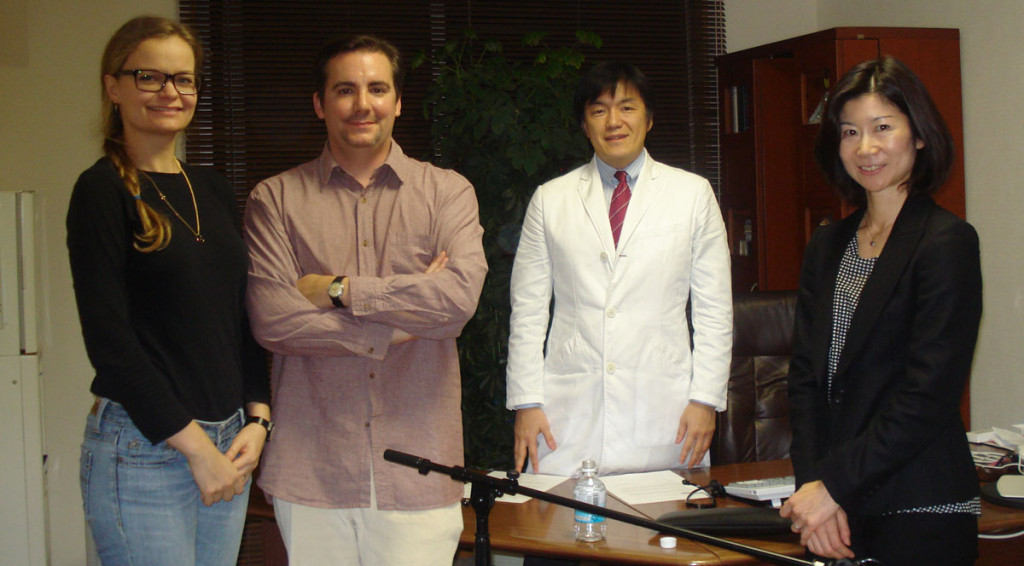
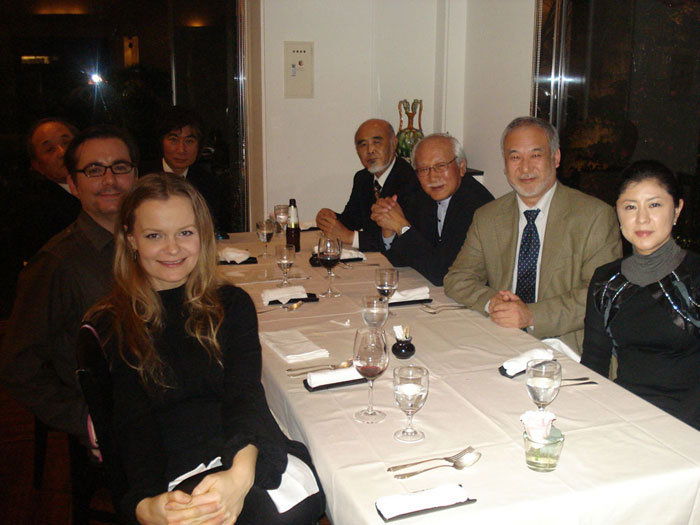
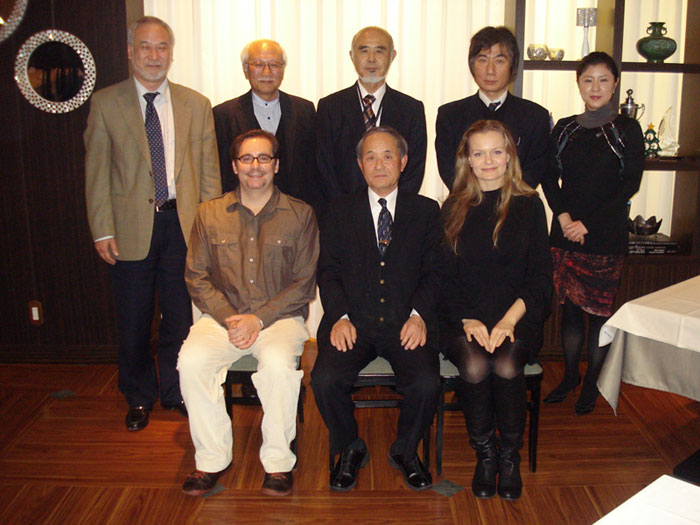
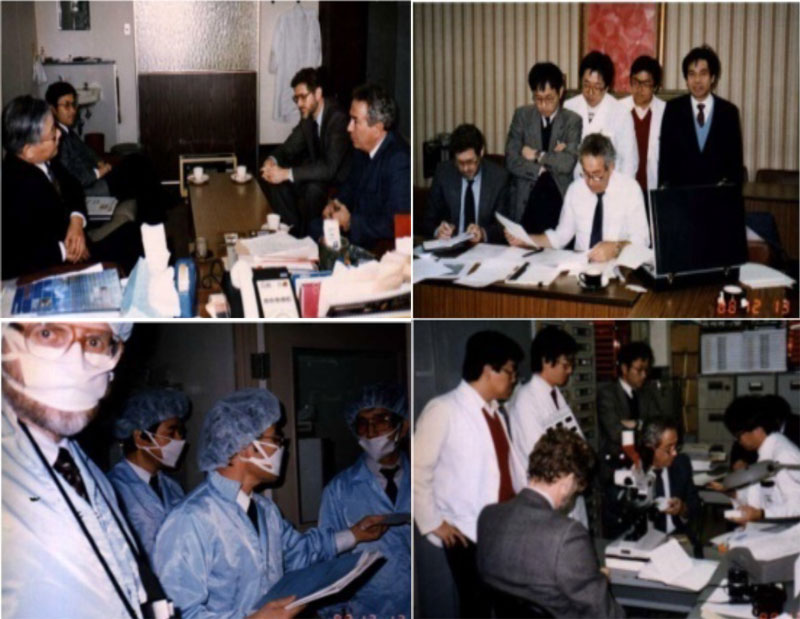
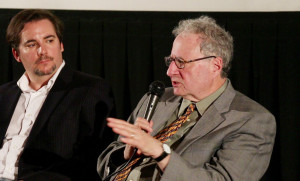
Recent Comments